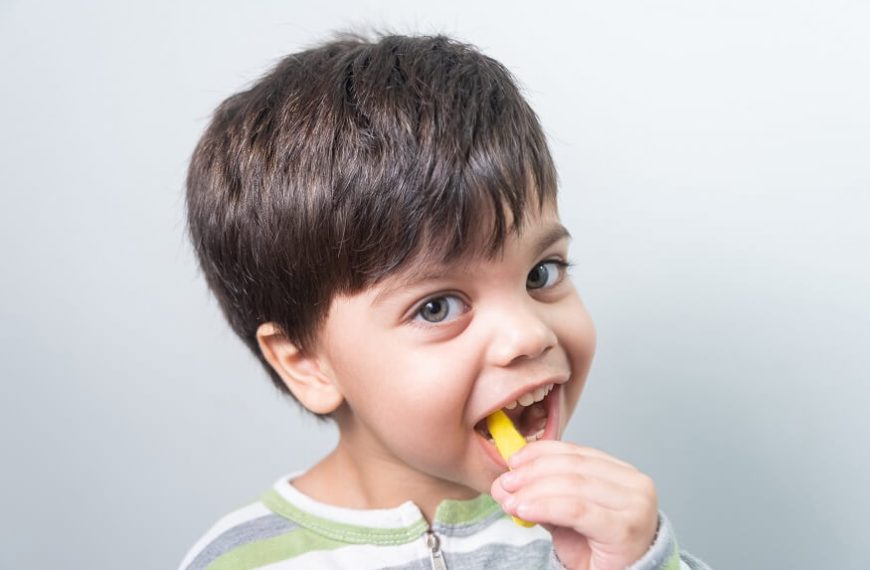Teething is a significant milestone in a toddler’s life, marking the emergence of their primary teeth. While it’s an exciting phase, it can also be a challenging one for both parents and toddlers. In this article, we will explore the symptoms of teething in toddlers and provide valuable tips for soothing their discomfort. Let’s delve into this important topic.
Symptoms of Teething in Toddlers
- Excessive Drooling :
- Irritability
- Swollen Gums
- Biting and Gnawing
- Changes in Eating Habits :
- Restless Sleep
- Low-Grade Fever
- Ear Pulling and Cheek Rubbing
One of the earliest signs of teething is excessive drooling. Toddlers may produce copious amounts of saliva as their new teeth push through the gums. This can lead to chapped skin around the mouth and neck. To address this, keep a clean cloth handy to wipe their face and consider using a teething bib to prevent skin irritation.
Teething can be uncomfortable for toddlers, causing irritability and mood swings. They may become fussier than usual and find it challenging to settle down. Offering a comforting and soothing environment can help alleviate their distress. Gentle cuddling and soothing lullabies can work wonders during this period.
Swollen and tender gums are common symptoms of teething. You might notice redness and puffiness around the area where new teeth are emerging. Providing a teething toy or a chilled, clean washcloth for your toddler to chew on can help alleviate the discomfort associated with swollen gums.
Toddlers often seek relief from teething discomfort by biting and gnawing on anything within their reach. This includes toys, fingers, and even their pacifiers. To ensure their safety and soothe their gums, offer teething rings designed specifically for this purpose. Make sure they are safe, BPA-free, and easy to clean.
Teething can temporarily affect a toddler’s eating habits. Some may experience a decrease in appetite, while others might prefer cold, soft foods that are gentler on their sore gums. Ensure they stay well-hydrated and offer a variety of teething-friendly snacks, such as chilled cucumber or yogurt.
Discomfort from teething can disrupt a toddler’s sleep patterns.To help them get a good night’s rest, maintain a consistent bedtime routine and consider using teething gels or pain relievers (as advised by a pediatrician).
While teething itself doesn’t cause a high fever, some toddlers may experience a low-grade fever during this phase. This is a result of the body’s response to the teething process. It’s essential to monitor the fever and consult with a healthcare professional if it persists or worsens.
Toddlers often exhibit unusual behaviors when teething, such as pulling their ears or rubbing their cheeks. This can be a sign of referred pain, as the discomfort from their gums may radiate to other areas of the face. Gently massaging their cheeks or using teething gel can provide relief.
Tips for Soothing Discomfort During Teething
- Teething Toys :
- Chilled Washcloth :
- Teething Gel
- Gentle Gum Massage
- Provide Cold Foods
- Distraction and Comfort
- Consult a Pediatrician
- Maintain Oral Hygiene :
- Offer Love and Patience
Invest in safe and age-appropriate teething toys that your toddler can chew on. These toys are designed to provide counterpressure against the emerging teeth and can alleviate discomfort.
A clean, damp washcloth chilled in the refrigerator can be a simple yet effective teething remedy. The coldness provides relief to sore gums when your toddler gnaws on it.
Consult with your pediatrician before using teething gels or ointments. When approved, use them sparingly and strictly according to the instructions provided. These gels can temporarily numb the gums, offering relief to your little one.
Wash your hands thoroughly and use a clean finger to gently massage your toddler’s gums. This can alleviate discomfort and help with the teething process. Remember to be gentle and cautious.
Offer cold, soft foods like yogurt or pureed fruits to soothe your toddler’s gums and keep them well-nourished during teething.
Engage your toddler in fun activities and games to keep their mind off the teething discomfort. Distraction can work wonders in reducing their fussiness. Additionally, provide comfort through cuddles and soothing words.
If your toddler’s discomfort seems excessive or if you have concerns about their teething process, don’t hesitate to consult a pediatrician. They can provide guidance on appropriate teething remedies and address any underlying issues.
Even before your toddler’s teeth fully emerge, it’s essential to establish good oral hygiene practices. Gently clean their gums with a clean, damp cloth to remove any residue and maintain oral health.
Above all, offer your toddler plenty of love and patience during this challenging phase. Teething can be tough on both parents and toddlers, so maintaining a calm and understanding attitude is crucial.
Understanding the symptoms of teething in toddlers and knowing how to soothe their discomfort is essential for both parents and caregivers. This natural process is a significant part of a child’s development, and with the right knowledge and care, it can be a smoother journey for everyone involved.
For comprehensive care and support in your toddler’s development, consider enrolling them in EuroKids, where we prioritize not only their physical well-being but also their overall growth. EuroKids offers a nurturing environment and a well-structured curriculum designed to foster your child’s holistic development. Give your child the best start in life with EuroKids.
The information provided on this website is not a substitute for professional medical advice. EuroKids encourages you to consult with a qualified healthcare professional for any health concerns you may have. The information on this website is not intended to diagnose, treat, cure, or prevent any disease.
















